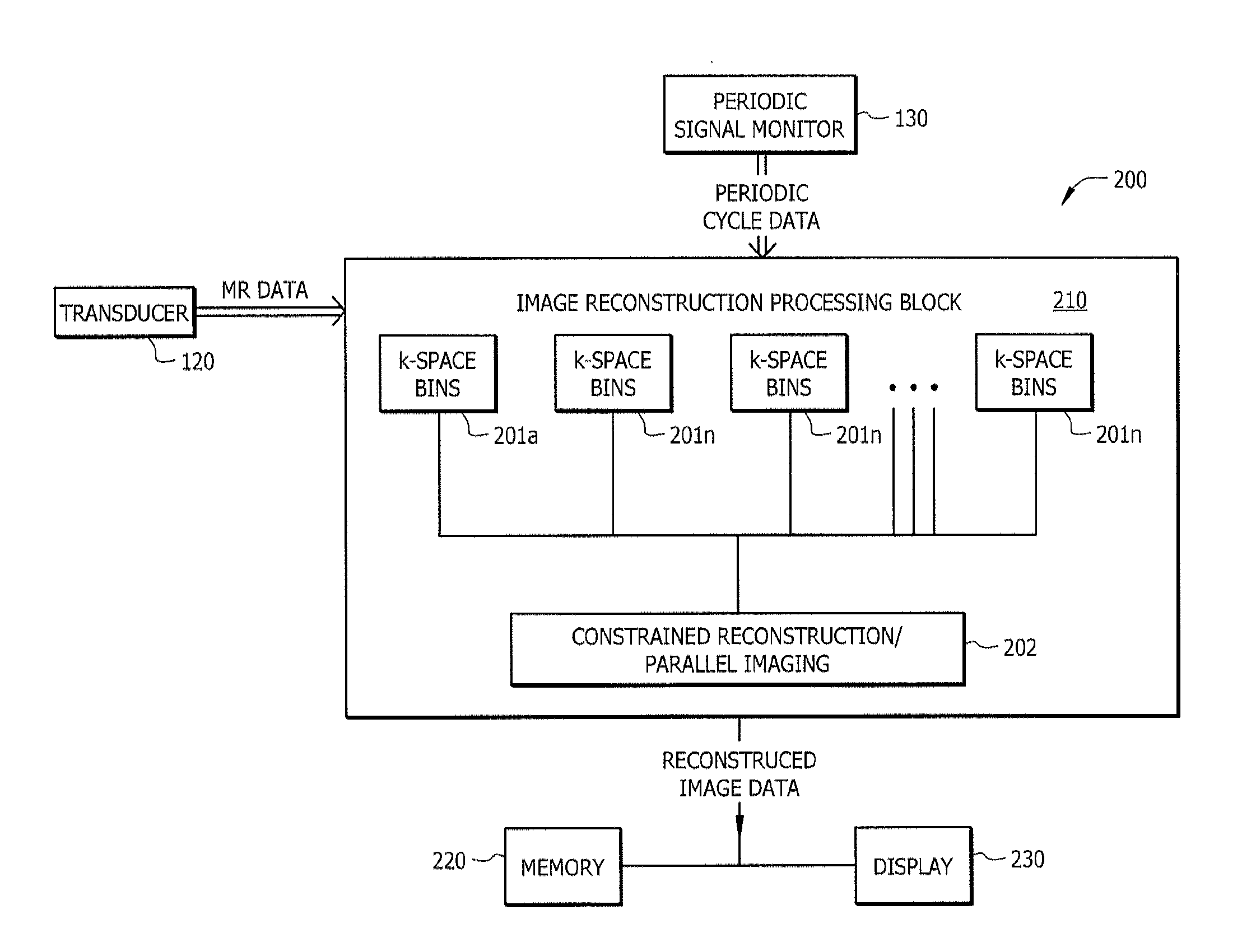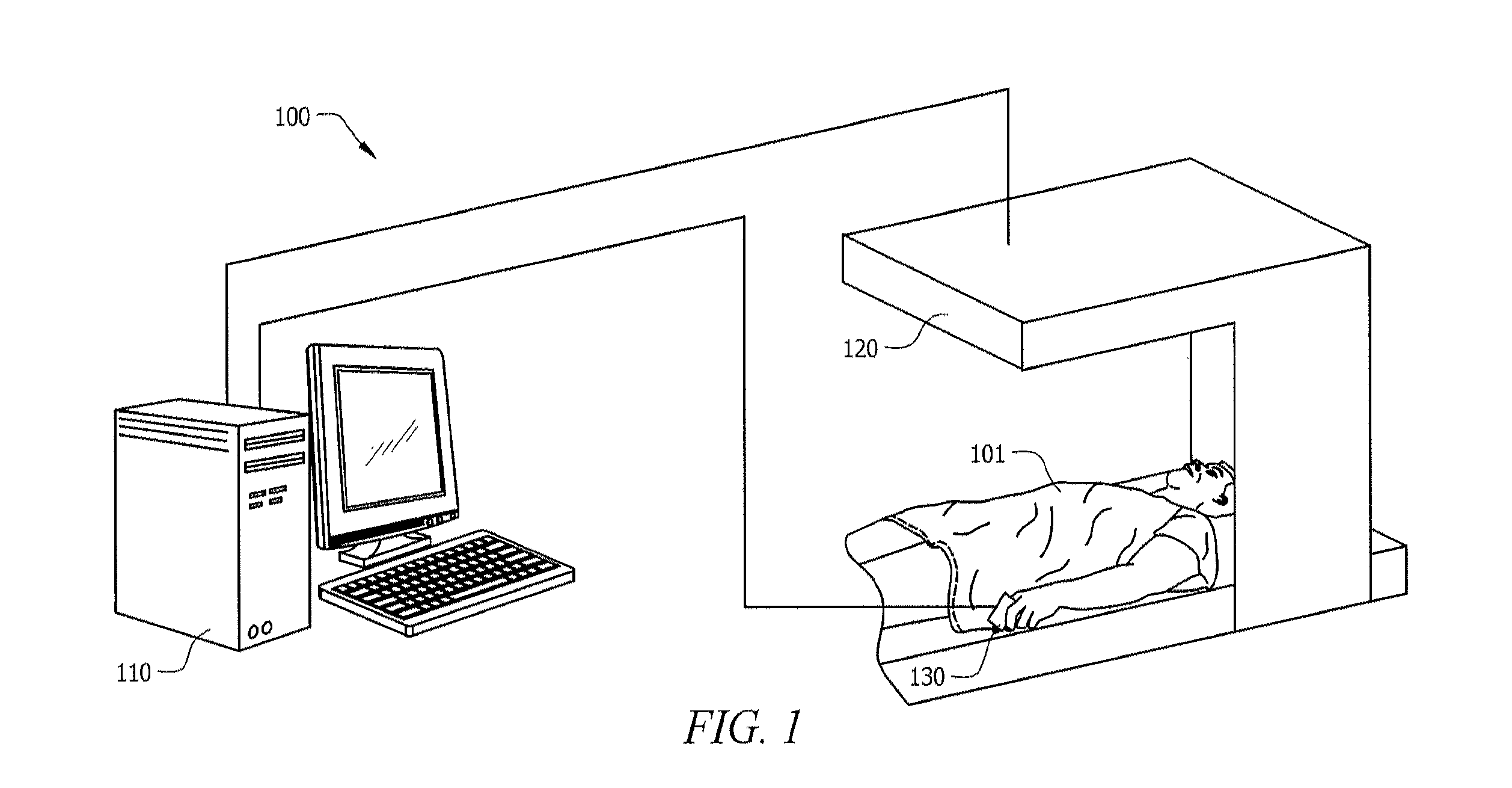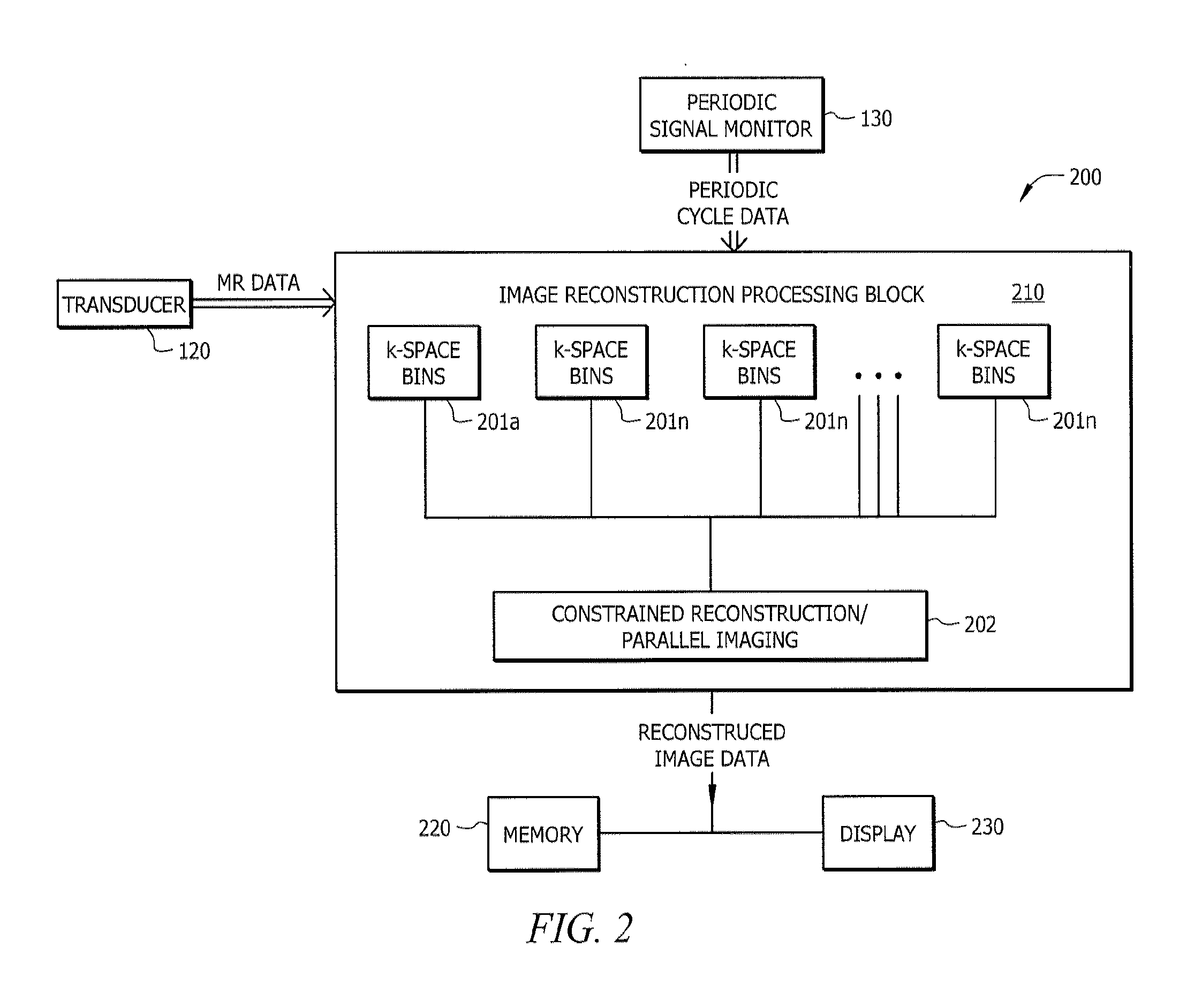Retrospectively Correlated Turbo Spin Echo Imaging
a turbo spin echo and retro correlation technology, applied in the field of magnetic resonance imaging, can solve the problems of reducing the quality of images, reducing the accuracy of gradient echo techniques, and inability to create acceptable images, so as to reduce artifacts
- Summary
- Abstract
- Description
- Claims
- Application Information
AI Technical Summary
Benefits of technology
Problems solved by technology
Method used
Image
Examples
Embodiment Construction
[0022]In portions of the following description, embodiments are illustrated in terms of imaging a human subject and monitoring cardiac cycle movements. However, it is noted that the inventive aspects discussed herein may be used when imaging any type of subjects while monitoring any form of periodic movement therein. The specific examples are utilized for descriptive purposes only and are not intended to be limiting. Alterations and further modifications of the inventive features illustrated herein, and additional applications of the principles of the inventions as illustrated herein, which would occur to one skilled in the relevant art and having possession of this disclosure, are to be considered within the scope of the invention.
[0023]Directing attention to FIG. 1, an imaging system adapted according to an embodiment of the present invention is shown as imaging system 100. Imaging system 100 comprises processor based system 110 operatively coupled to transducer 120 and periodic s...
PUM
 Login to View More
Login to View More Abstract
Description
Claims
Application Information
 Login to View More
Login to View More - R&D
- Intellectual Property
- Life Sciences
- Materials
- Tech Scout
- Unparalleled Data Quality
- Higher Quality Content
- 60% Fewer Hallucinations
Browse by: Latest US Patents, China's latest patents, Technical Efficacy Thesaurus, Application Domain, Technology Topic, Popular Technical Reports.
© 2025 PatSnap. All rights reserved.Legal|Privacy policy|Modern Slavery Act Transparency Statement|Sitemap|About US| Contact US: help@patsnap.com



